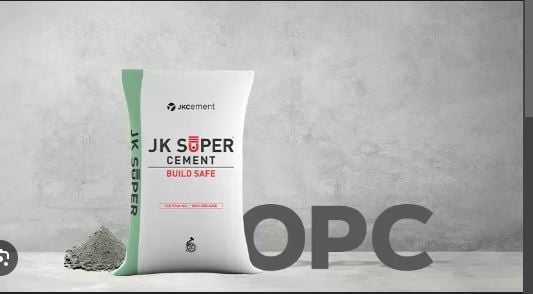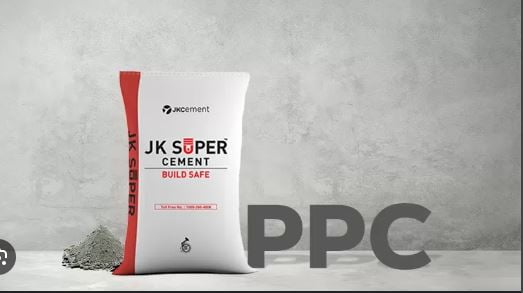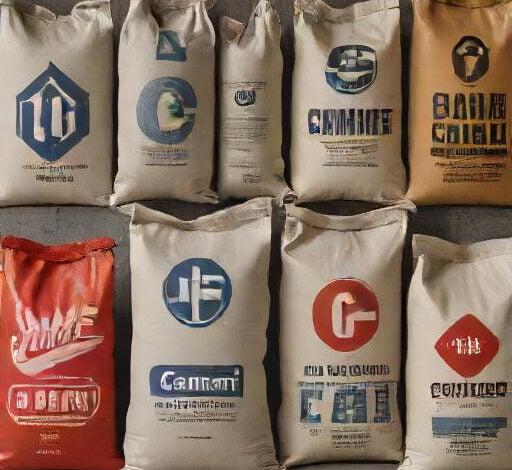Constructing a building is much like creating a masterpiece. Every ingredient, every element that goes into it, must be of top-notch quality. One such critical ingredient is cement. Cement serves as the backbone of the construction process, and choosing the best cement is pivotal to the strength, durability, and longevity of your structure. This blog will guide you on how to select the best cement for construction works.
Understanding Cement
Cement is a binder, a substance that sets, hardens, and adheres to other materials, binding them together. Used extensively in construction, cement provides the necessary durability and strength to the structures. There are various types of cement available in the market, each suitable for different kinds of construction works.
Types of Cement
Ordinary Portland Cement

(OPC) is the most widely used type of cement in construction projects around the world. It is favored for its high strength and durability, making it suitable for a variety of applications, including building foundations, bridges, pavements, and structural components. OPC is composed primarily of clinker, a material made by heating limestone and clay at high temperatures, along with small amounts of gypsum to control the setting time. Its reliable performance and versatility make it a key material in the construction industry.
Portland Pozzolana Cement (PPC)

Portland Pozzolana Cement, commonly known as PPC, is a variant of Ordinary Portland Cement (OPC). The primary difference between the two lies in their composition and properties. PPC is manufactured by synthesizing OPC cement with pozzolanic materials in a certain proportion. These pozzolanic materials, which can be either artificial or natural, contain silica in a reactive form. They include volcanic ash, calcined clay, or silica fumes and make up about 15% to 35% of the cement’s weight.
One of the significant advantages of PPC is that it can increase the strength of the cement and reduce the amount of OPC used. As the pozzolano materials are very fine, they can fill gaps between the reinforcement and aggregate, thus reducing shrinkage, honeycomb formation, and bleeding. This, in turn, increases the strength and durability of concrete.
PPC is also highly resistant to alkaline reactions or marine corrosion, making it suitable for the construction of marine structures, including hydraulic dams, and constructions near marine structures.
Considerations for PPC
While PPC offers several advantages, there are a few considerations to keep in mind. The initial strength obtained from PPC is less, which can affect the de-shuttering of supports early. As it contains more fine material, handling of concrete can be difficult. When compared to OPC, the setting time is less for PPC.
Moreover, PPC cement needs a long time for curing, and the curing temperature has a significant influence on its strength development.
Rapid Hardening Cement: This type of cement gains strength faster than OPC and is used in construction where the structure is required to be functional at the earliest.
Low Heat Cement: This cement is used in the construction of dams and other large concrete works.
Factors to Consider While Choosing the Best Cement
Selecting the best cement for construction works depends on various factors:
Type of Construction:
The choice of cement depends heavily on the type of construction. For example, for constructing a dam, low heat cement would be the best choice, while for general construction, OPC or PPC would suffice.
Durability:
The cement chosen should be able to withstand different environmental conditions. It should be resistant to different chemical attacks and should be able to maintain its strength over time.
Price:
While it is important not to compromise on the quality of cement, the cost is also a significant factor. The choice of cement should fit within your budget.
Availability:
The cement chosen should be readily available in the market to ensure a smooth construction process.
Best Practices for Storing Cement
Once you’ve selected the best cement for construction works, it is crucial to store it properly to maintain its quality and effectiveness:
Store in a Dry Place:
Cement should always be stored in a dry place, as it can absorb moisture from the environment, which can affect its quality.
Proper Sealing:
Cement bags should always be sealed properly and should not be left open. This prevents the cement from coming into contact with the moisture in the air.
Avoid Direct Contact with the Ground:
Cement bags should never be stored directly on the ground. Instead, they should be kept on wooden planks or pallets to avoid moisture absorption from the ground.
Choosing the best cement for construction work is a critical decision. Remember, the durability and strength of your structure depend on the quality of the cement used. Therefore, understanding the different types of cement, considering the factors for selection, and following the best practices for storage can ensure a strong and long-lasting structure.


